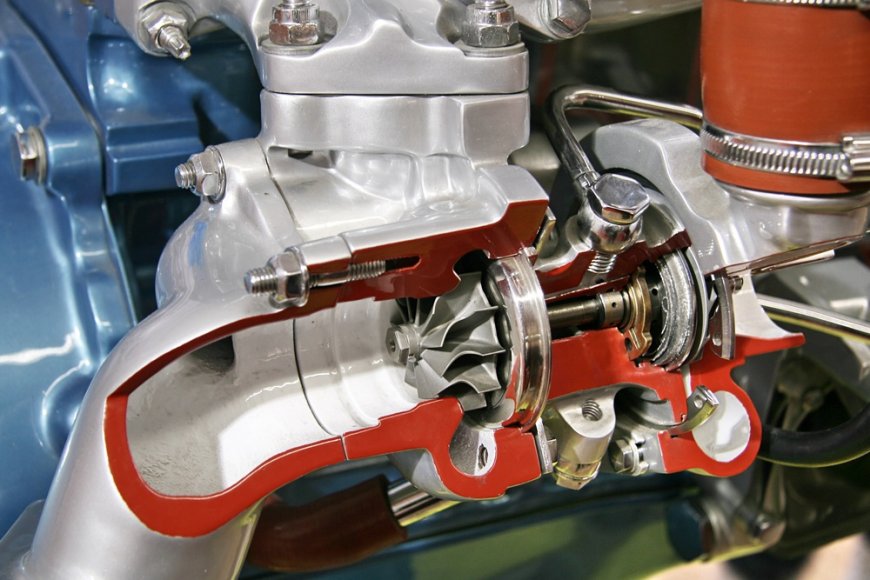
Understanding Turbocharging
-
Compressor: Draws in and compresses air.
-
Turbine: Driven by exhaust gases, it powers the compressor.
-
Intercooler: Cools the compressed air before it enters the engine, improving efficiency and power.
-
Wastegate: Regulates the turbocharger's boost pressure.
Benefits of Turbocharging
-
Increased Power Output: Turbocharging can significantly enhance your engine's horsepower and torque.
-
Better Fuel Efficiency: By improving engine efficiency, turbochargers can deliver better fuel economy.
-
Enhanced Performance: Turbocharged engines offer superior acceleration and overall performance.
Types of Turbochargers
-
Single Turbo: Simple and effective for most applications.
-
Twin-Turbo: Utilizes two smaller turbos for better response and efficiency.
-
Variable Geometry Turbo: Adjusts the turbine's geometry for optimal performance across a wide range of speeds.
Turbocharger Sizing
|
Turbo Size
|
Engine Displacement
|
Power Increase
|
|
Small
|
1.0L - 2.0L
|
20-40%
|
|
Medium
|
2.0L - 3.0L
|
40-60%
|
|
Large
|
3.0L+
|
60%+
|

Engine Modifications
Upgrading the Exhaust System
-
Headers: Improve exhaust flow and reduce back pressure.
-
High-Flow Catalytic Converters: Increase exhaust efficiency while maintaining emissions compliance.
-
Cat-Back Exhaust Systems: Replace the exhaust system from the catalytic converter back for improved performance and sound.
Air Intake Systems
-
Cold Air Intakes: Increase airflow and reduce intake temperatures.
-
Performance Air Filters: Provide better filtration and airflow compared to stock filters.
Fuel System Upgrades
-
High-Flow Fuel Injectors: Deliver more fuel to the engine, supporting increased power.
-
Fuel Pumps: Ensure a consistent and adequate fuel supply.
Internal Engine Modifications
-
Forged Pistons: Provide greater strength and durability under high boost conditions.
-
Performance Camshafts: Optimize valve timing for increased power and efficiency.
-
Lightweight Connecting Rods: Reduce rotating mass and improve engine response.
ECU Tuning
Practical Tips for Engine Modifications
-
Set Realistic Goals: Determine your performance goals and budget before starting any modifications.
-
Research: Educate yourself on the specific components and their compatibility with your vehicle.
-
Professional Installation: Consider professional installation to ensure optimal performance and reliability.
-
Maintenance: Regular maintenance is essential to keep your modified engine running smoothly.
Common Mistakes to Avoid
-
Overlooking Supporting Modifications: Ensure all supporting components, such as the fuel system and cooling system, are upgraded to handle the increased power.
-
Ignoring Reliability: Focus on reliability and longevity by choosing high-quality components.
-
Skipping Tuning: Proper ECU tuning is essential for maximizing the benefits of your modifications.
Q&A
Q: How much horsepower can I expect to gain from turbocharging my engine?
A: The horsepower gain depends on your engine's size and the type of turbocharger used. On average, you can expect a 20-60% increase in power.
Q: Do I need to upgrade my fuel system when installing a turbocharger?
A: Yes, upgrading your fuel system is crucial to ensure adequate fuel supply to support the increased power.
Q: Can I install a turbocharger on a naturally aspirated engine?
A: Yes, but it requires significant modifications, including strengthening the engine internals and upgrading the fuel and cooling systems.
Q: Will turbocharging affect my car's fuel economy?
A: Turbocharging can improve fuel efficiency by making the engine more efficient. However, driving habits and tuning will play a significant role in the overall fuel economy.
Q: How can I reduce turbo lag in my turbocharged engine?
A: Using a smaller turbo, twin-turbo setup, or variable geometry turbo can help reduce turbo lag. Additionally, proper tuning and a well-designed exhaust system can minimize lag.
Q: Is professional installation necessary for turbocharging and engine modifications?
A: While some experienced enthusiasts may perform the installation themselves, professional installation is recommended to ensure optimal performance and reliability.
References
-
Garrett Motion Turbochargers: https://www.garrettmotion.com
-
Holley Performance Products: https://www.holley.com
-
Cobb Tuning: https://www.cobbtuning.com
